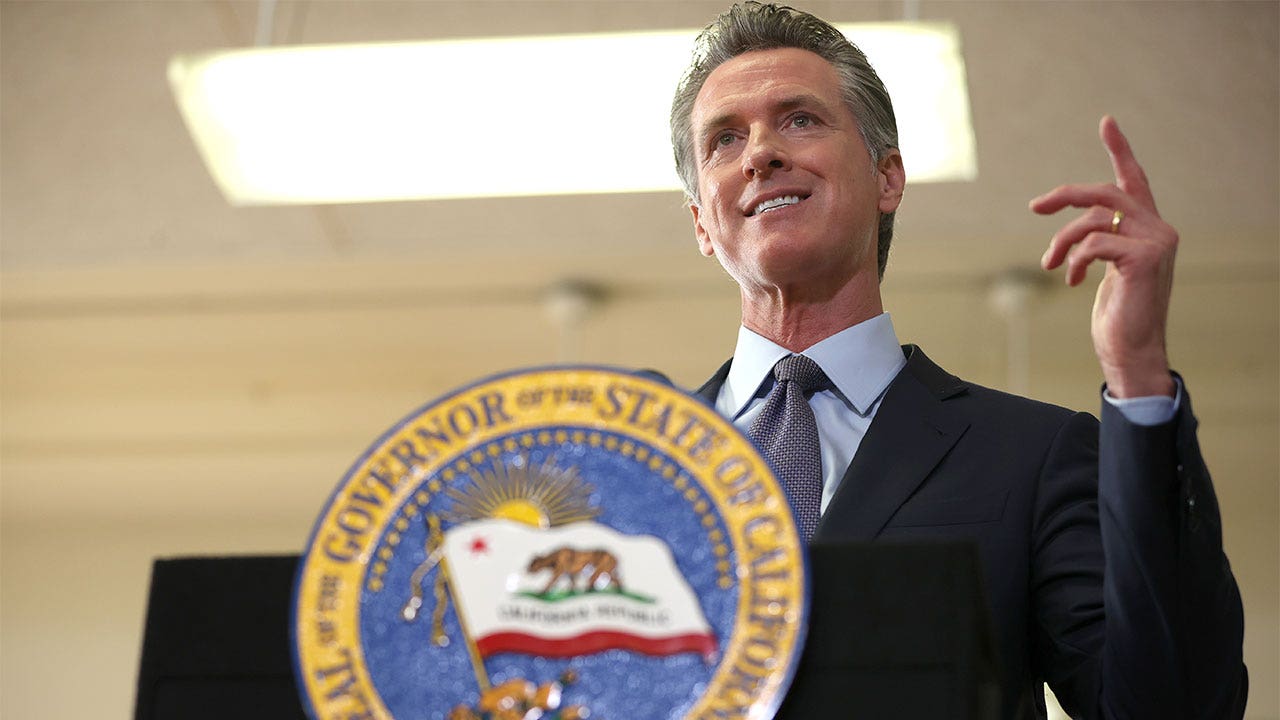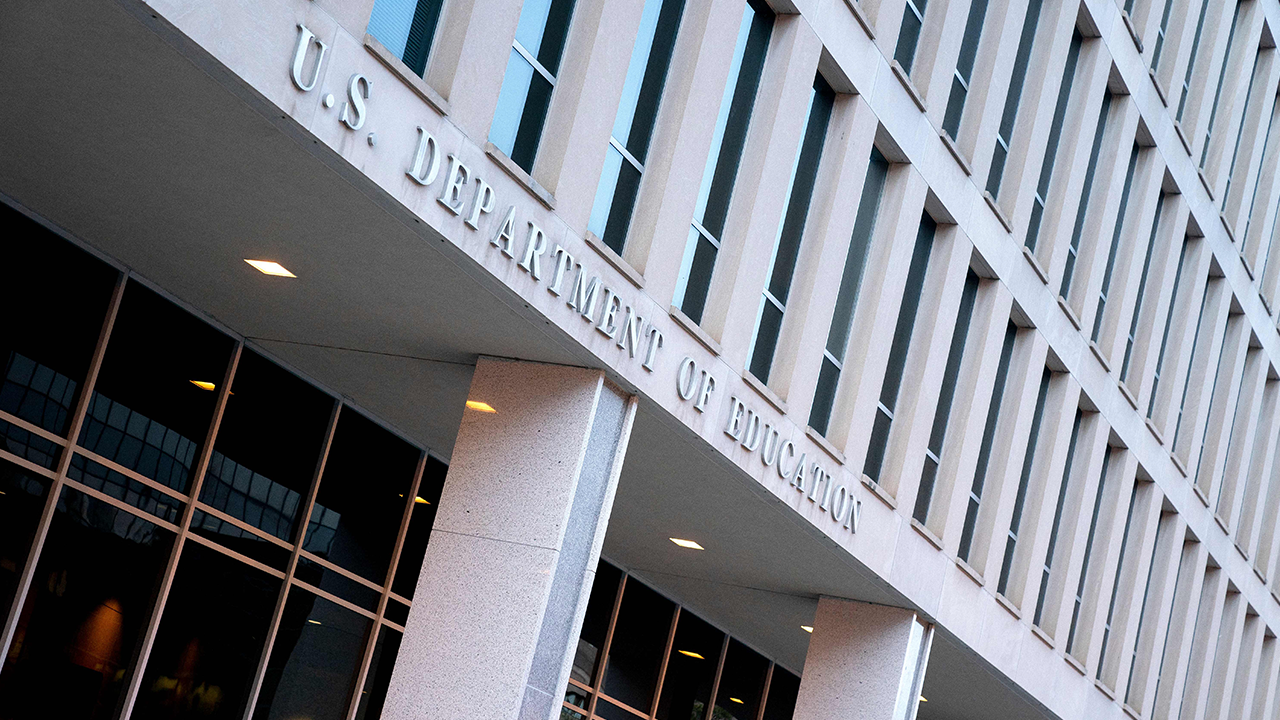On September 17, 2011 a band of protestors entered Zuccotti Park in lower Manhattan and declared it to be an autonomous zone known as Occupy Wall Street. Over the next two months they would build a strange community, free from the government, in the park and their movement would spread across the country.
Ten years later, two things stand out about Occupy Wall Street. First, how incredibly successful it was in transforming the American left and the Democratic Party, and second, that neither the left, nor the Democrats care to celebrate it very much.
A short, incomplete list of how Occupy changed the political dynamics of America must include three things, income inequality as the main driving issue for progressives, the defunding, or diminution of policing, and race essentialism. Before the Occupy movement each of these were fringe positions in the Democratic Party, today, by and large, they are the Democratic Party.
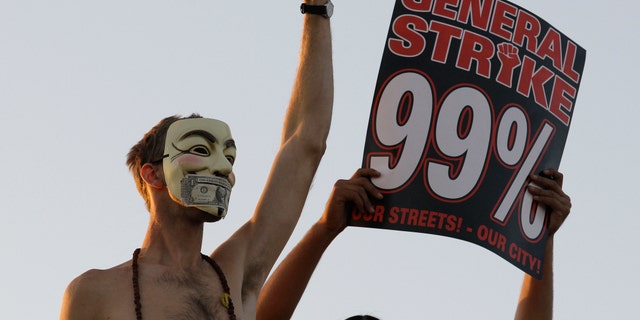
FILE — In this Nov. 2, 2011 photo, Occupy Wall Street protestors stand on top of a parked semi truck during a march from downtown Oakland, Calif., to the port of Oakland. From New York to San Francisco to London, some of the demonstrators decrying a variety of society’s ills are sporting stylized masks loosely modeled on a 17th-century English terrorist, whether they know it or not. The masks come from "V for Vendetta," a comic-based movie whose violent, anarchist antihero fashions himself as a modern Guy Fawkes, the Catholic insurrectionist executed four centuries ago for trying to blow up Parliament. (AP Photo/Jeff Chiu)
(AP2011)
The most successful slogan of the Occupation was “the 1% vs the 99%.” Democrats had long been accused of demonizing the rich, but had also been firm in their overall commitment to the basic practices of capitalism, at least officially.
BLACK LIVES MATTER PROTESTERS ARRESTED OUTSIDE MET GALA, WHERE AOC SCHMOOZES INSIDE
Nobody really knew the term income inequality before Occupy, and no mainstream Democrat would posit socialism as a solution to it. Yet, just 5 years after the encampment in Zuccotti Park, Bernie Sanders, an avowed socialist, would very nearly become the Democratic nominee for president by running on little else.

FILE – Occupy Wall Street protesters meditate while a sign bearing their twitter handle hangs from a railing in Zuccotti Park in New York October 1, 2011. REUTERS/Jessica Rinaldi
As far as the police are concerned, from day one the occupiers insisted that they did not need, and would not tolerate police presence in the park. For some reason the city of New York under then Mayor Michael Bloomberg gave in to this demand, a decision that would prove fateful. In the early weeks it seemed to be working out. The park had a library, food service, stationary bikes provided for their meager power needs, and donations poured in from across the nation.
More from Opinion
But though much of the park resembled a kind of 21st century Woodstock, a darker side emerged very early on. While the college students talked high political ideas on one side of the park, punk and anarchist drum circles, rife with drugs played out on the other.
AOC ACCUSED OF JUDGING LEGISLATION BY SKIN COLOR OF ITS SUPPORTERS
Business owners on the surrounding blocks, not the big financial firms, mind you, but small eateries and shops complained that the occupation was destroying their enterprises, and without the police, things would only get worse.
There was, sort of, a government in Occupy Wall Street. It was called the General Assembly. Each night it gathered to craft rules by allowing everyone to speak. But there was a twist. One that seemed bizarre at the time, but now seems the norm on the left.
Occupy Wall Street was based on the idea that capitalism, policing, even America itself were irrevocably broken. It was an extreme, fringe position. Today, just ten years later, it no longer is. It is rather the core philosophy of the Democratic Party.
The Assembly used a “progressive stack” system to assign speaking slots. Those with the most marginalized identities, racial minorities for example, spoke first, those at the top of the oppression hierarchy, straight white men for example, spoke last.
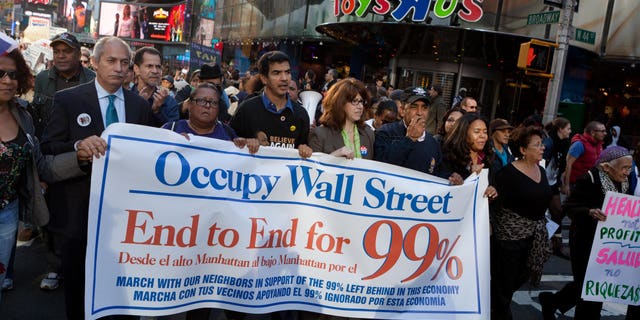
FILE – Demonstrators affiliated with the Occupy Wall Street protests walk through Times Square during an 11-mile march from uptown Manhattan to Zuccotti Park, Monday, Nov. 7, 2011, in New York. Elected officials, labor leaders and other protesters started walking in Washington Heights to show solidarity with the Occupy Wall Street movement. (AP Photo/John Minchillo)
( )
The idea was to redress historical power imbalances by using racial preferences to reverse them. And while the idea wasn’t entirely new, in 2011 normal Democrats did not talk so brazenly about defining people and assigning them roles, based on their skin color. That is now absolutely the mainstream position of the Democratic Party and it is a shocking change that occurred largely through the Occupy Movement’s embrace of racial essentialism.
FLASHBACK: ‘OCCUPY WALL STREET’ PROTESTS TURN VIOLENT WHEN DEMONSTRATORS CLASH WITH POLICE
The bottom line is that the post Occupy Democratic Party moved harder and faster to the left than the organizers of the occupation could even have dreamed of.
In 2008, candidate Barack Obama ran for president of the United States as a Democrat opposed to gay marriage based on his Christian beliefs. Today that position is disqualifying on the left.
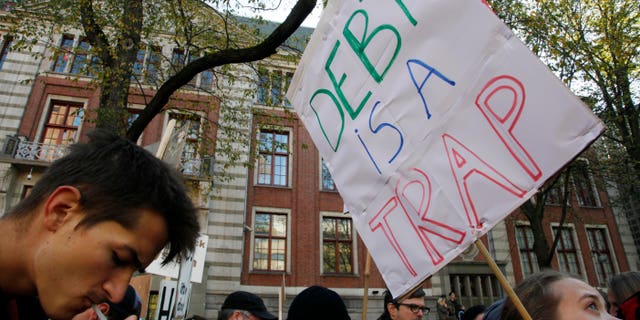
Demonstrators hold placards outside the NYSE Euronext stock exchange, rear, in Amsterdam, Netherlands, Saturday Oct. 15, 2011, during a demonstration in support of the Occupy Wall Street movement.
So given all the success that Occupy had, even in its lifespan of just a few months, why doesn’t the American left celebrate it? Where are the folk heroes? Why aren’t we regaled with stories about the brave movement and how it changed America? To answer that, we must look at how Occupy Wall Street ended.
By mid-November the authorities in New York City had finally had enough and removed the protestors from Zuccotti Park.
Why? That goes back to the issue of autonomous zones without police. Reports of crime, including sexual assault, inside Zuccotti Park were growing. The occupiers promised that they could police their own, with something like social workers instead of guns (does that sound familiar at all?). It didn’t work. In the final days a women-only safe-space sleeping tent was erected, but it was far too little, far too late, and the police finally took action.
CLICK HERE TO GET THE OPINION NEWSLETTER
This is why we do not hear the glorious tales of Occupy Wall Street. Why it is not etched in glory in the progressive pantheon, why its 10th anniversary is not a huge celebration for the American left.
It is because of how it ended. With crime, sexual assualt, and rape.
Just over the past year or so we have seen this pattern repeated twice. First in Seattle at the Capitol Hill Occupied Protest where two teenagers were shot, one fatally, and another in Atlanta where an autonomous zone was created outside of a Wendy’s where a police shooting took place; there an 8-year-old girl was killed.
Occupy Wall Street was based on the idea that capitalism, policing, even America itself were irrevocably broken. It was an extreme, fringe position.
Today, just ten years later it no longer is. It is rather the core philosophy of the Democratic Party.
CLICK HERE TO GET THE FOX NEWS APP
For this reason we must remember Occupy on its 10th anniversary, and think long and hard about where it has gotten us.
It is likely the most successful American political protest movement of the 21st century, and in it, can be found almost every policy, idea, and attitude that conservatives must focus their energy on to defeat.






